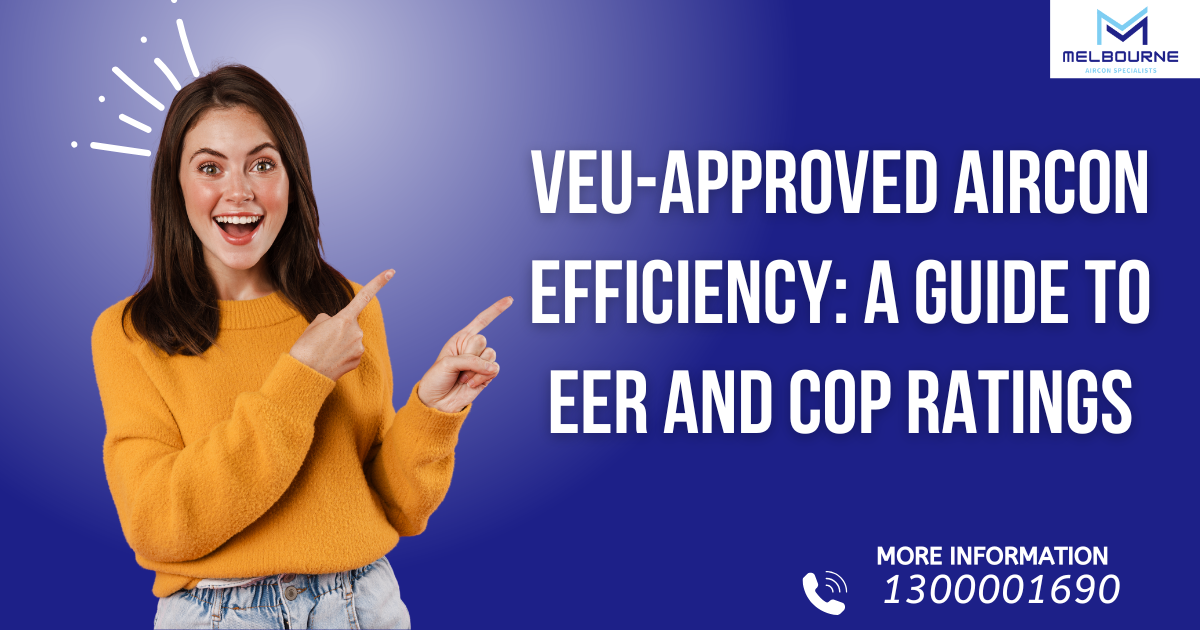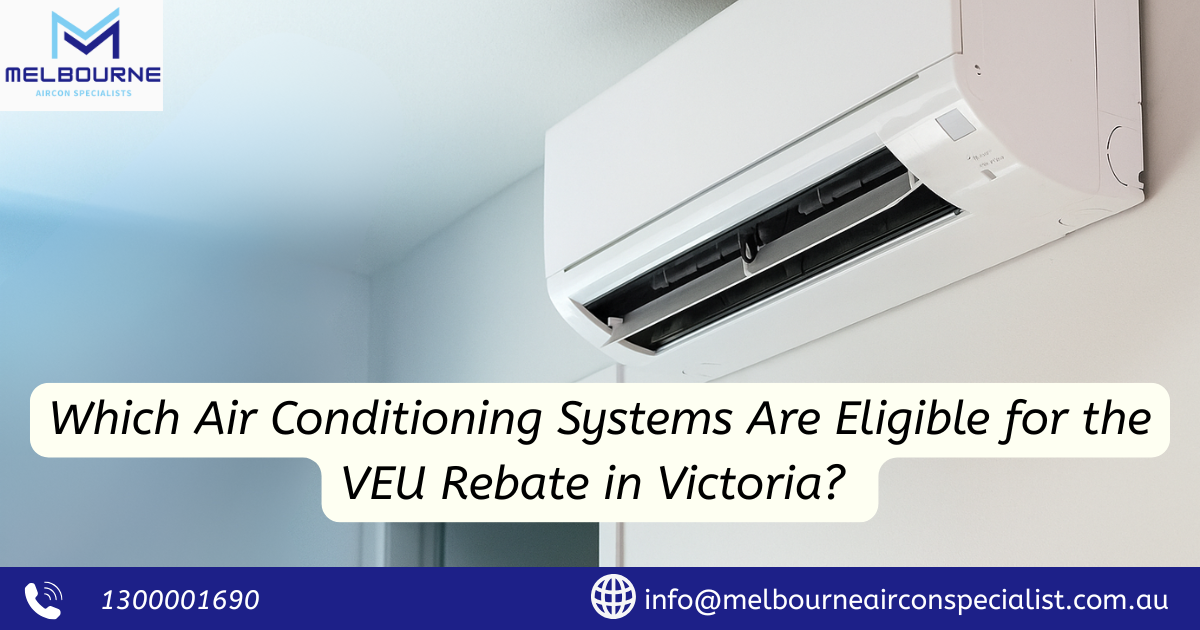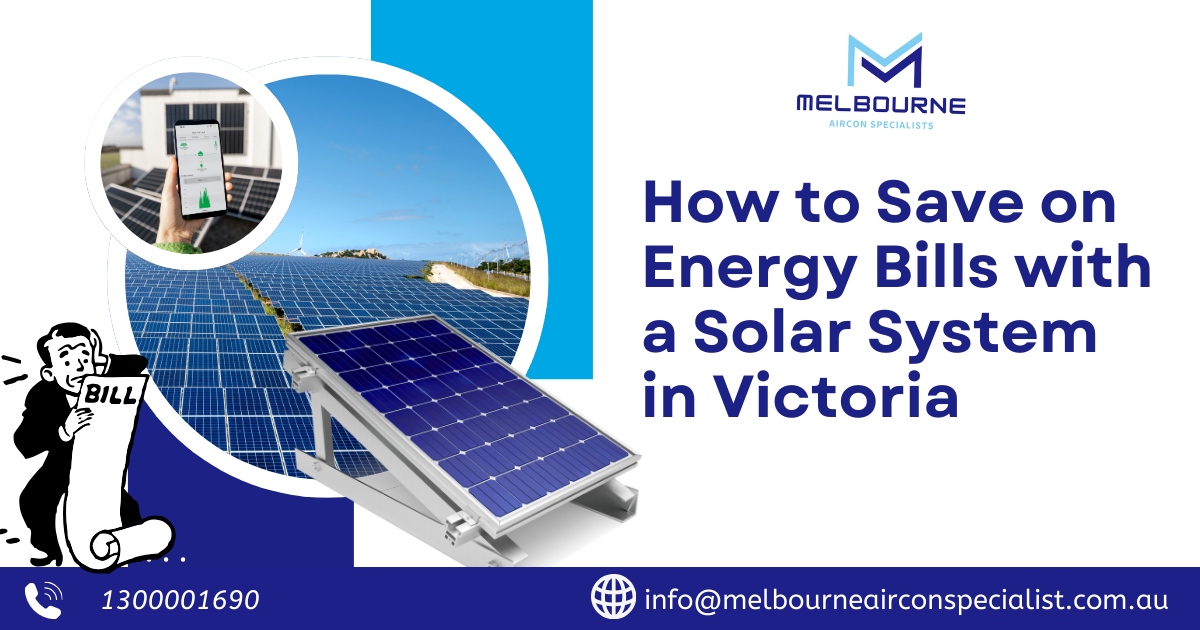Hot summers, rising power bills and an old, noisy air conditioner that barely keeps up?For many Victorian households, that’s the reality. The good news:...
VEU-Approved Air Conditioner Efficiency: Understanding EER and COP Ratings
If you’re considering upgrading your home’s climate control system, it’s essential to know how efficient your new unit will be. At Melbourne Aircon Specialist, we guide homeowners through the most important metrics in the VEU rebate program: EER (Energy Efficiency Ratio) and COP (Coefficient of Performance).
What is EER and Why It Matters?
EER, or Energy Efficiency Ratio, tells you how efficiently an air conditioner converts electricity into cooling. The higher the number, the better the performance.
How EER is Calculated:
EER = Cooling Output (kW) ÷ Power Input (kW)
Example:
If a system delivers 6kW of cooling using 1.5kW of electricity:
EER = 6 ÷ 1.5 = 4.0
This rating is crucial not only for lowering your power bills but also for qualifying under the Victorian Energy Upgrades (VEU) program.
What’s the Difference Between EER, COP & SEER?
Each rating plays a different role in measuring system efficiency.
| Metric | Stands For | What It Measures | Relevance |
|---|---|---|---|
| EER | Energy Efficiency Ratio | Cooling efficiency at a fixed condition | Key for VEU rebates |
| COP | Coefficient of Performance | Heating efficiency at a fixed condition | Important for reverse-cycle systems |
| SEER | Seasonal Energy Efficiency Ratio | Average cooling efficiency over the season | Reflects real-world performance |
📌 EER = Cooling | COP = Heating — both matter when choosing reverse cycle systems.
What Is a Good EER Rating?
| System Type | EER Rating |
|---|---|
| Average new systems | 3.5–4.0 |
| High-efficiency units | 4.0+ |
| Older systems | 2.0–2.5 |
| Top VEU-approved models | Up to 5.0 |
The higher the EER and COP, the greater the savings and chances of rebate eligibility.
Real-World Example: VEU-Eligible System (Midea MULMI0618-B)
| Setup | Cooling Output (W) | Power Input (W) | EER | Heating Output (W) | Power Input (W) | COP |
|---|---|---|---|---|---|---|
| 4x 3.5kW Heads | 13,500 | 3,400 | 3.97 | 15,600 | 3,950 | 3.95 |
| 6x 3.0kW Heads | 18,000 | 4,950 | 3.64 | 21,000 | 5,800 | 3.62 |
📝 Note: Adding more heads reduces overall system efficiency due to increased load.
Why Does EER Matter for Rebates and Savings?
- VEU eligibility depends on meeting or exceeding minimum EER and COP ratings.
- Systems with higher efficiency:
- Lower running costs
- Reduce carbon emissions
- Unlock maximum rebates
Tip: Use an online EER calculator or spec sheet to compare units before buying.
Final Recommendation from Melbourne Aircon Specialist
To get the best value:
- Choose units with EER ≥ 3.8 and high COP values
- Look for 4–5 star rated models
- Ensure VEU program eligibility for rebates
- Contact our team to ensure professional, compliant installation
We help Melbourne homes upgrade to energy-efficient systems that lower bills and boost comfort.
FAQs
Q1: Is a higher EER better?
Yes! A higher EER means better efficiency, lower energy use, and reduced running costs.
Q2: What’s the ideal EER range?
Look for air conditioners with an EER between 3.5–4.5. Anything above 4.0 is excellent.
Q3: Which star rating should I aim for?
5-star systems offer the best efficiency. Always choose the highest your budget allows.
Q4: What’s the difference between EER and COP?
EER measures cooling performance, while COP measures heating. For year-round performance, both are critical.
📞 Need Help Choosing the Right Air Conditioner?
Contact Melbourne Aircon Specialist today for expert advice and VEU rebate assistance.
👉 Call 1300 001 690
📧 info@melbourneairconspecialist.com.au





